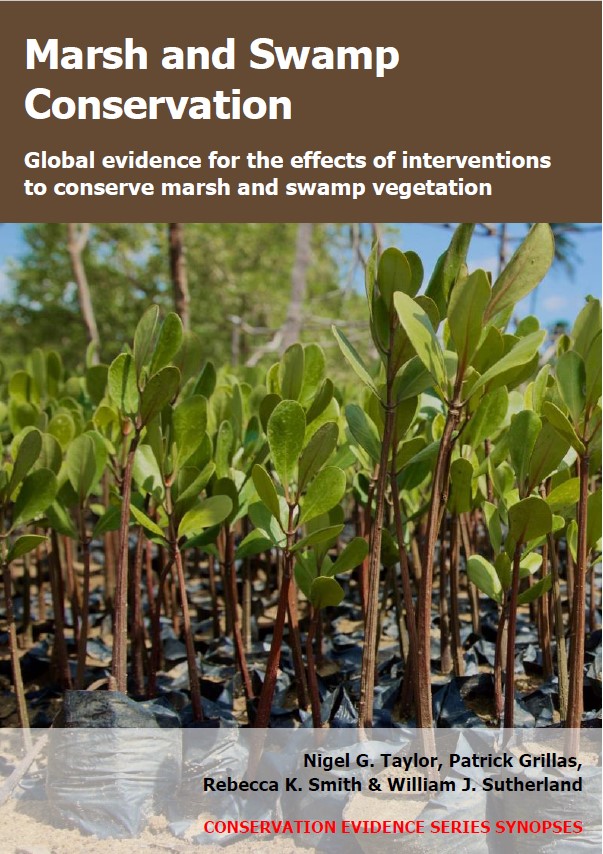Plant non-woody plants into moisture-retaining peat pots: freshwater wetlands
-
Overall effectiveness category Unknown effectiveness (limited evidence)
-
Number of studies: 1
View assessment score
Hide assessment score
How is the evidence assessed?
-
Effectiveness
40% -
Certainty
27% -
Harms
0%
Study locations
Supporting evidence from individual studies
A replicated, randomized, paired, controlled study in 2012–2013 in a freshwater wetland in Wisconsin, USA (Doherty & Zedler 2015) found that planting tussock sedge Carex stricta into peat pots had no clear or significant effect on sedge survival, biomass or cover after two growing seasons, but did increase sedge growth rate in drier plots during the first growing season. After two growing seasons, sedges planted into peat pots or bare soil had similar survival rates (peat pots: 87–100%; bare soil: 100%; statistical significance not assessed). The above-ground biomass of surviving sedges was statistically similar under both treatments (peat pots: 6–34 g/plant; bare soil: 4–39 g/plant). The same was true for sedge cover (peat pots: 47–70%; bare soil: 38–62%). The growth rate of planted sedges was statistically similar in three of four comparisons (peat pots: 0.011–0.014 mm/mm/day; bare soil: 0.013–0.014 mm/mm/day). In the other comparison – in drier plots and in the first, drought-affected growing season – the growth rate was greater for sedges planted into peat pots (0.011 mm/mm/day) than sedges planted into bare soil (−0.003 mm/mm/day). Methods: In spring 2012, six pairs of 1-m2 plots were established in a wetland undergoing restoration. Five nursery-reared tussock sedges were planted into each plot, then regularly watered and weeded. In half of the plots (one random plot/pair), the sedges were planted into peat pots sunk into the soil. Survival and above-ground biomass of planted sedges, and total tussock sedge cover, were surveyed in June–August 2013. Biomass was dried before weighing. Growth rates were calculated from leaf lengths measured in 2012 and 2013.
Study and other actions tested
Where has this evidence come from?
List of journals searched by synopsis
All the journals searched for all synopses
This Action forms part of the Action Synopsis:
Marsh and Swamp Conservation
Marsh and Swamp Conservation - Published 2021
Marsh and Swamp Synopsis





)_2023.JPG)














